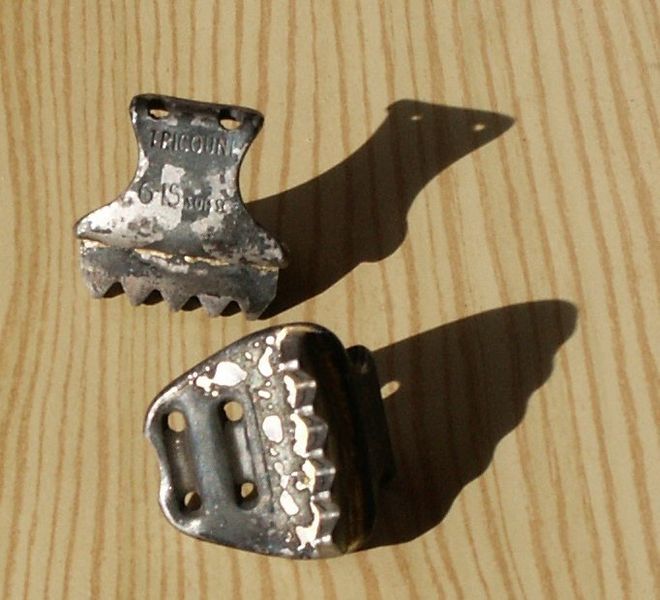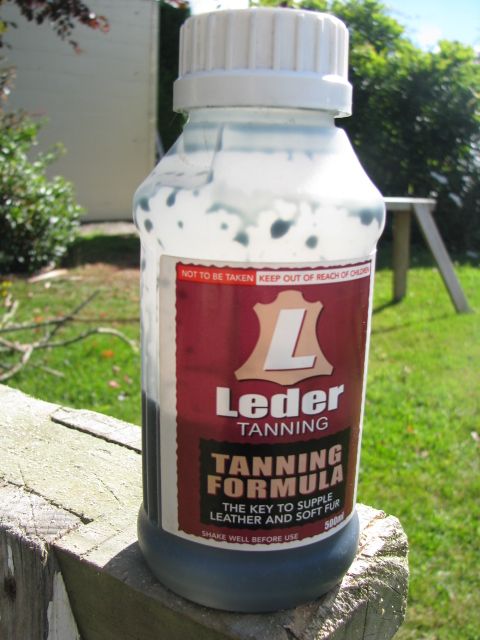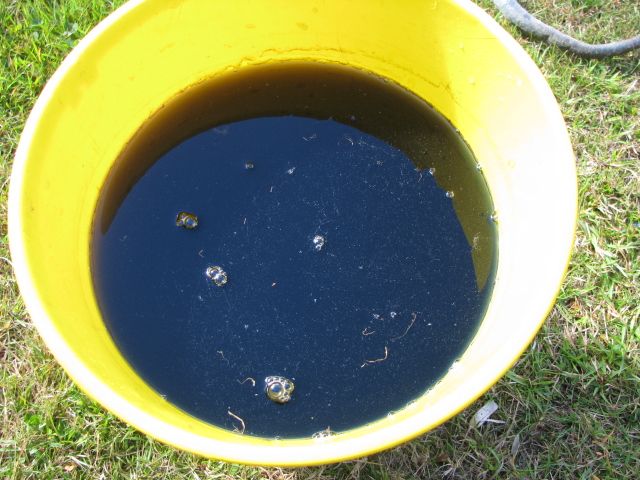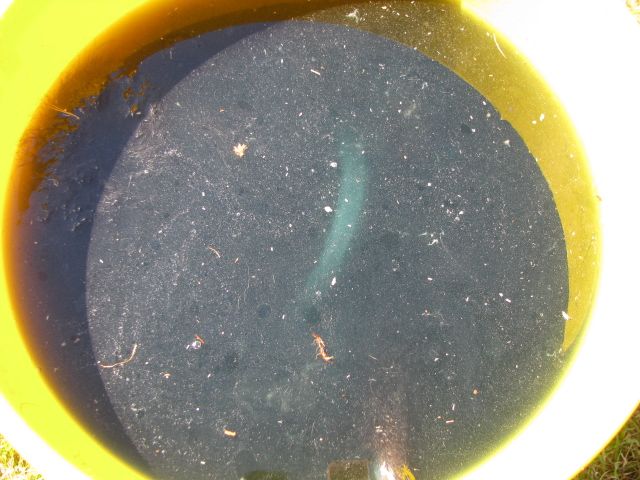Right, better get back to this!
Between work commitments, another overseas guest (Yorkshire man

) and crappy weather at times I tried to do the next series, it has been some time between innings here. Thankfully, salted and rolled hides stored somewhere dark with a bit of airflow will not dry out- you can leave them a fair while before they become "beyond use".
Usually a couple of days salting will suffice to help harden the hair follicles and tighten the skin whilst pickling the flesh membrane, but a couple of weeks does not seem to matter. So now the hides have had a sufficient salted period, it is time to un-roll and strip any flesh membrane remaining after the initial skinning.
Rolled/salted pelts.
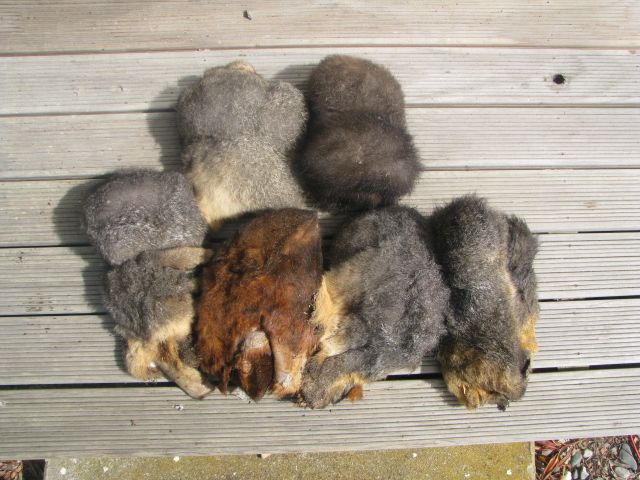
Unrolled and heavily salted.
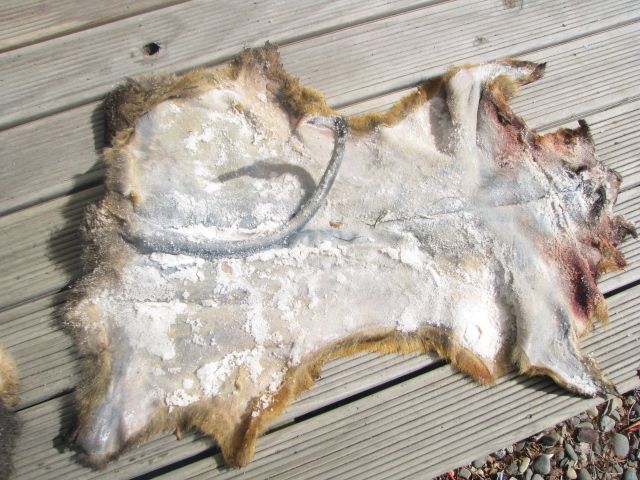
I prefer to do this outdoors, but no reason it could not be done in a garage with a concrete floor. It just is NOT one of those jobs for the den!

First up, give the skin a vigorous shake to remove most of the loose salt. Then onto the fleshing station.......
I use an old chair that is kind of specific for the task, a length of 4X2" (2X4 for most of you) timber 3' long or thereabouts and an old teaspoon. A dessert or table spoon works just as well, you just want a dull rounded edge.
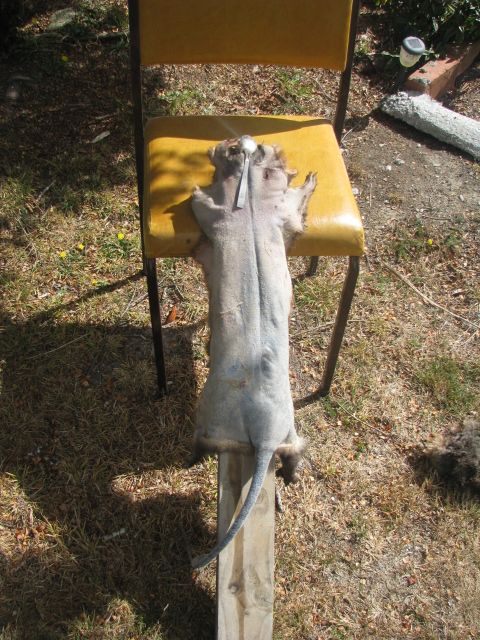
I sit on the chair, timber between my legs and resting on the front edge of the seat. Skin if placed fur side down on the 4X2 and tail down- head up, so you are stripping the flesh from head to tail.
Starting at the head, I use the bowl section of the spoon to scrape the skin. The edge of the spoon not so much cuts through as pushes the flesh aside, kind of rolling it off the skin. Once started it is easy to keep working down the skin pushing, rolling and manipulating the flesh away. Sometimes it will come off in large sections- often though it is in smaller sections.
If it is really difficult to convince the flesh to separate from the skin, re-salt, re-roll and put away for another couple of days.
A wee word of warning here, possum skins are as tough as old boots and you can be quite rough with the fleshing actions. Some small mammalian pelts are quite thin and can tear very easily- just use enough pressure to get the job done, be careful not to run the spoon over the sharp edges of the 4X2 as this can cause tear through. As your dominant hand guides the spoon, your off-hand holds the top of the skin, keeping it taunt.
Work your way to the tail area, often a fatty area that requires a bit of extra effort.
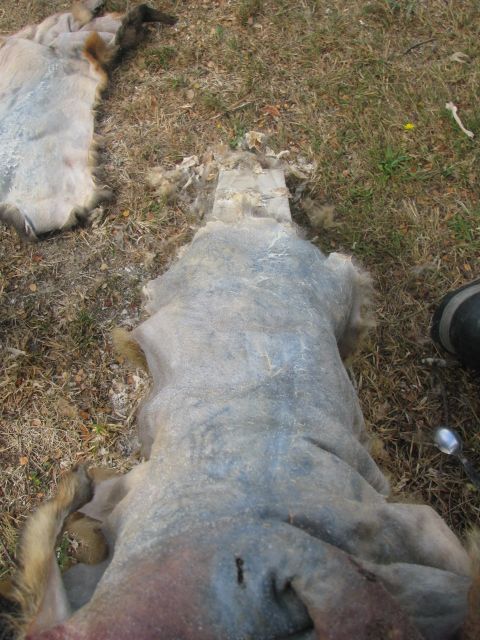
At the bottom of the timber once the hide is fleshed should be a "collection" of salt and heavily salted flesh membranes. The hide should be basically "clean" on the flesh side.
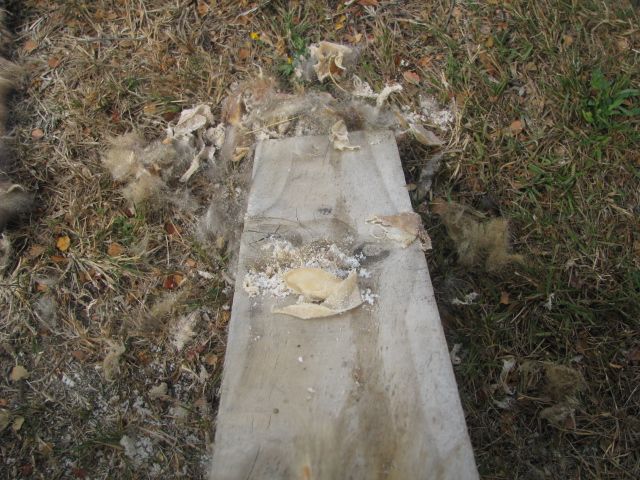
Now, for those of you that keep dogs and they are hanging around salivating whilst you are doing this..... DO NOT let them eat the by-products of your work. Dogs cannot process a lot of heavily salted things and it can do them some very real harm. Clean it up and bin it before Fido shows up or is allowed to investigate the area.
Raw salt and the pressure points of the spoon on your hands/fingers if not used to this kind of thing can be pretty hard on skin, wear gloves if you have any doubt beforehand, better to loose a bit of dexterity with wearing gloves that to suffer from red raw dry skin and blisters.

After fleshing, the hides should be well rinsed off with clean water.
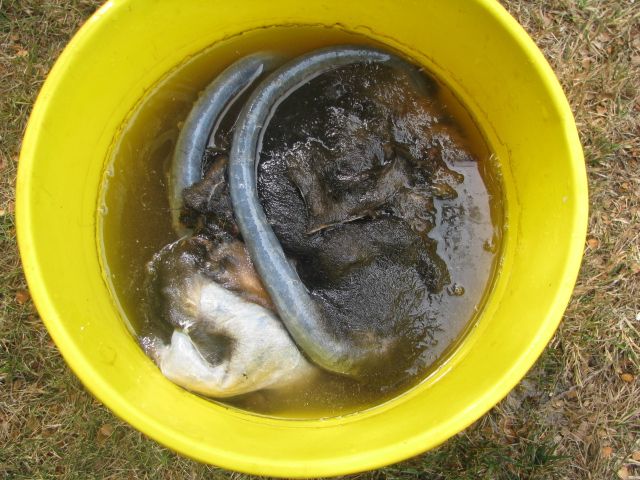
Most store bought chemical tanning kits for small hides only require "slicing" of the flesh section of the hide rather than full removal as the chemicals are absorbed/penetrate from both the hair side and flesh side of the pelt.
However, I feel total or near to it removal is best for Borax treatment and overall end result and tidiness of the finished product.
Next up will be the chemical bath and I might do one under Borax just for demonstration purposes.
I will try not to let this slip back to page 3 before I can get to this!

